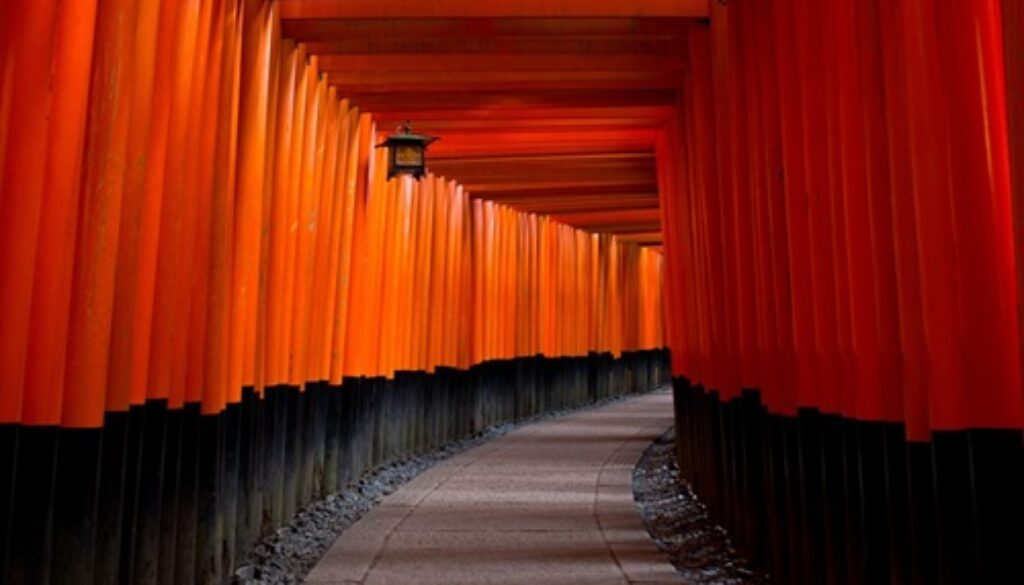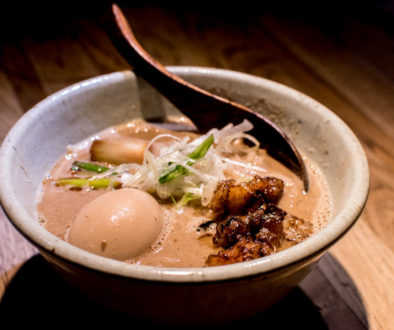As someone who has lived here in Kyoto for years and has heard dozens of itineraries from tourists and family alike, the following is what I would personally consider my ideal travel itinerary if I only had three days to explore Kyoto. Although I have regularly told my friends and family spend at least seven days in Kyoto to see what I consider “everything,” this list will introduce the highlights. ]
Please feel free to switch things out that you would rather see or visit instead. Just make sure to join us on your first night for our Kyoto Food Tour to get personalized recommendations!
Day 1: Central Kyoto
Map Route – Three Day Kyoto Itinerary
In Japan, breakfast is a meal that is usually prepared and eaten at home. Because of this, you may notice that there aren’t that many restaurants open before 10am.
If you aren’t able to take advantage of your hotel’s or ryokan’s breakfast, try to take a walk around your hotel to find a bakery. Kyoto is famous for its French style bakeries with a Japanese twist, and offer both sweet and savory options. The good ones might not be listed on google maps, and will often open from around 7am to catch commuters.
You can also try out some western-style chain stores, such as Komeda Coffee, Doutor, or Caffe Veloce. Make sure to keep to a light breakfast so you can fully enjoy your lunch in a few hours.
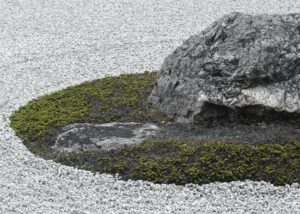
8:00am – Arrive at Ryoan-ji, the Zen Buddhist temple famous for a beautiful rock garden and large pond, which opens at 8am. Take a leisurely stroll in the peaceful and quiet atmosphere before the large tour buses being arriving from 9am. [It takes about 10-15 minutes by bus to get to the Golden Pavilion from here.]
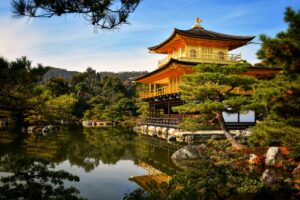
9:00-9:30am – Arrive at the Golden Pavilion (Kinkaku-ji) which opens at 9am. This is one of the most famous Zen temples in the country, and the top two stories of the main building are covered in real gold leaf. [It takes about 10-15 minutes by bus to get to Daitoku-ji from here.]
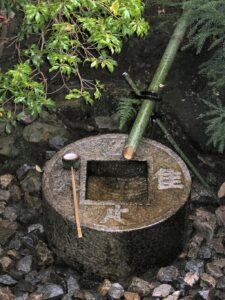
11:00am – Make a reservation at Izusen located in Daitoku-ji Temple a few weeks or months before your vacation to Japan. I recommend making a reservation for 11am, but the last seating is at 3pm. It is a traditional Kyoto kaiseki course meal based on traditional Buddhist monk cuisine. Home to around a dozen sects of Buddhist temples, the Daitoku-ji complex can be explored at leisure after your meal. Different temples are open throughout the year. [It takes about 30 minutes by bus to get to Nijo Castle from here.]
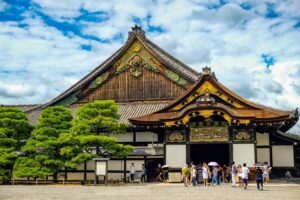
3:00pm – Assuming your meal takes about two hours and you take another hour to walk around, you’ll arrive just in time to enjoy Nijo Castle before it closes at 5pm. It’s bigger than you might expect! Enjoy walking the expansive gardens and the inside of the castle, both of which are included in the initial entry price. [It takes about 20 minutes by bus to get to Nishiki Market.]
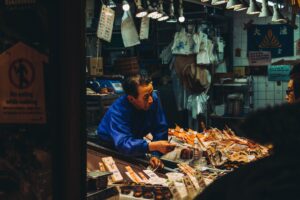
5:00pm – Meet us near Nishiki Market for the beginning of Ninja Food Tours Kyoto Night Food Tour! Our tour will give you a local’s perspective and enough historical and cultural context to fully enjoy the city of Kyoto for the remainder of your stay. We will briefly visit Nishiki Market and introduce the area, then enjoy three sit-down izakaya-style restaurants that showcase local and traditional Kyoto cuisine.
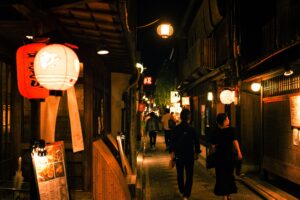
8:30pm – When our tour ends, you will find yourself in beautiful Ponto-cho, a historical district on the west side of the Kamogawa river. We highly recommend taking time after the tour to get a couple drinks at some of the bars and explore around the beautiful and safe alleys in Kiyamachi and Ponto-cho.
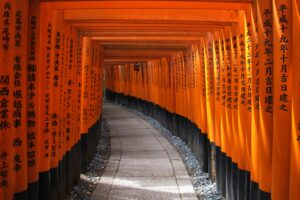
10:00pm – If you’re still up for some late-night adventuring around Kyoto, take the Keihan train line down to Fushimi Inari Taisha which is open 24/7. At this time of day, there are very few visitors at the 1,000 gated shrine. There are lights on so that you can see the path, but it is still pretty dark! It is a beautiful and peaceful stroll up the Fushimi mountain, and you may even make a few friends with the local cat population!
Day 2: East Kyoto
Map Route – Three Day Kyoto Itinerary
Walking from Kiyomizu-dera in Higashiyama all the way up to the Silver Pavilion (Ginkaku-ji) could be a leisurely 90 minute walk, but stopping to see a dozen temples and shrines, going shopping, and getting food from food stalls can easily eat up the entire day. I might even suggest renting a bicycle from a rental shop if it seems like too much walking, but be careful where you park it!
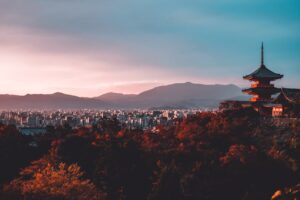
We recommend arriving at Kiyomizu-dera right when they open at 7am to avoid the crowds–it is the most popular attraction on our route today. Wind your way through Sannenzaka and Ninenzaka, and spot the scenic Yasaka Pagoda on your route. Most of the shops and stalls will be closed at this time, but it’s worth it to get this historical district to yourself (and all the photos, too).
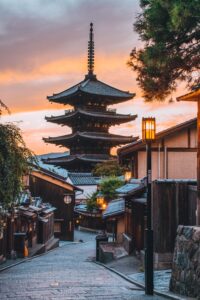
Continue walking north through the alleys and stop at Kodai-ji Temple, a temple known for its beautiful fall foliage, and walk through Maruyama Park to enter Chion-in Temple. Even though Gion is close by, I recommend coming back to see it and Yasaka Shrine at night when everything is open and the lanterns are lit. There won’t be much to see during the day.
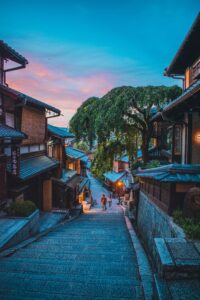
Once you’re on the north side of Maruyama park, you can either walk past the Keage Incline (very beautiful in the spring, but not much to see otherwise) on your way to Nanzen-ji or make a detour to Okazaki Park. The complex is home to several theaters, libraries, museums, and Heian-jingu Shrine. On the weekends, themed festivals are often hosted here, and stalls line the walkways. I love attending the annual craft gyoza festival and the craft beer festival here.
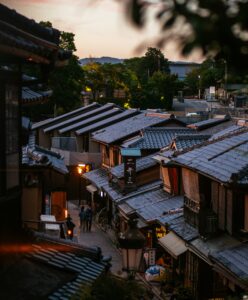
Nanzen-ji is directly east of the Keage Incline, and Eikan-do (a temple known for its stark fall foliage) is just above it. Next to Eikan-do is the official start of the Philosopher’s Path. Depending on how long each temple takes you, stop for lunch at any of the street stalls or even a sit-down lunch at a nice cafe or restaurant along the way. The further north you go, the longer the wait times will be for each restaurant.
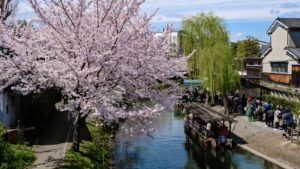
The Philosopher’s Path is littered with tiny shrines and temples along the way–feel free to stop at any that call out to you. My personal favorite is Otoyo Shrine, a shrine dedicated to the mouse (or rat) of the Chinese zodiac.
This peaceful walk along the canal will take you all the way to the Silver Pavilion (Ginkakuji), of which the main feature is its beautiful gardens rather than the building itself. The building, although not silver, shows off the Japanese aesthetic style of “wabi-sabi”, the idea of accepting transience and imperfection (the building is not symmetrical). It closes at 5pm, so I suggest arriving at or before 4pm to fully enjoy it.
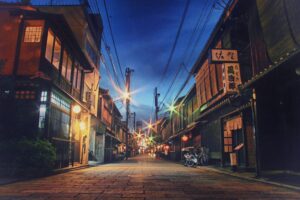
For dinner, go back to Gion, north of Shijo street, where most of the shops don’t open until 5-6pm. Most of the shops here are reservation only, so don’t rely on walking in. Book a tour with us to get some great recommendations, both formal and casual. Then, after dinner, take a walk around the Gion area south of Shijo street to see geisha heading to work. Make sure to hit Yasui Kompiragu Shrine, Ishibe-koji, and Yasaka Shrine. This is a great way to end a magical day in eastern Kyoto!
Day 3: West Kyoto
Map Route – Three Day Kyoto Itinerary
*** To secure your seat on the Sagano Romantic Train, tickets can be purchased from JR West at certain train stations beginning one month prior to your ride date each day at 10am. If you wish to sit in the open air car, select the “Sagano Rich Car.” The days of operation change seasonally, so make sure to research in advance. I recommend booking the 11pm train to break up the day of walking with some sitting. The train ride is 30 minutes each way, and you will be able to enjoy the beautiful scenery of the nearby gorge.
** Some people may want to take the train out west and take the Hozugawa River Boat Ride back to return to the area. The ticket counter can help you book this, or you can find guides online. The boat ride is solely in Japanese and takes approximately two hours. It is a great trip in the fall!
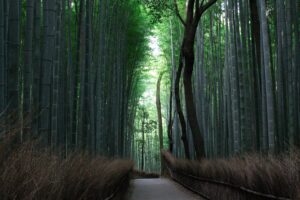
8:00am – Arrive at the Bamboo Forest Grove (Arashiyama) early to enjoy it with the least amount of people. There is an entire mountain path that you can walk as well, not just the little walking path where everyone congregates. If you keep walking for another 10-15 minutes, you’ll get the mountain walking path to yourself.
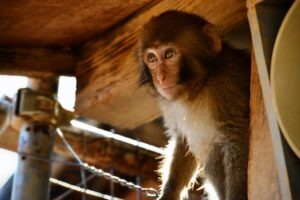
9:00am – Go straight to the Togetsukyo Bridge and cross over it to head to the Monkey Park. You can enjoy coffee from the famous % Arabica which opens at 9am. The Monkey Park also opens at 9am. Be warned, it is a steep hike up a mountain to the monkeys, but there are a few benches scattered along the way. The view of the city from the top is amazing. [Including the time it takes to get there and back from the Bamboo Grove, I would budget two hours for this experience.]
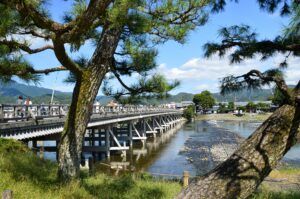
On your way down, you can grab some stall food on your way to the Sagano Romantic Train Ride. You can also walk through the Kimono Forest, an art installation with 600 backlit pillars adorned with kimono textiles. This looks best at night, though, when everything is lit up!
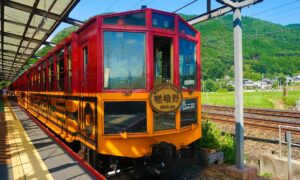
11:00am – If you secured tickets for the Sagano Romantic Train (and/or the Hozugawa River Cruise) board at your designated time. I recommend the 11am Train if you are going to the Monkey Park first. If you take the train there and back, you’ll be back at noon. If you ride the river boat back, you will probably be back by 2pm. Near the drop off points for the train and boat is Tenryu-ji. Enjoy a stroll through the botanical garden, rock garden, and a tea house, and explore the street food stalls for an on-the-go lunch.
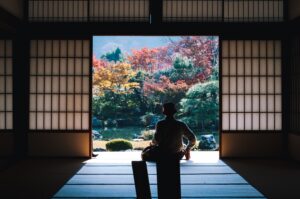
If you have enough time in the day after visiting Tenryu-ji and checking out the stall food for lunch, I recommend visiting Otagi Nenbutsu-ji Temple which is about a 30 minute walk to the north. It is a Buddhist temple founded in the 8th century that features more than 1,200 moss-covered stone statues. There are other temples in the area including Adashino Nenbutsu-ji, Gio-ji, and Nison-in. If you want to enjoy temples without the crowds, these temples are great to visit. Be warned that most temples close around 4:30pm.
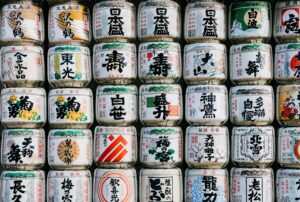
5:00pm – It’s time for dinner. There are some great restaurants in the Arashiyama area, but most close after lunch time. If you enjoy sake and are short on time in this beautiful city, I would hate to see you miss out on the Fushimi Sake District. From the Bamboo Forest to Fushimi will take an hour by train, but it is well worth it to visit this charming village that feels like you’ve stepped back in time. Home to some of the oldest sake breweries in the world, many of the breweries, restaurants, and bars in the area offer sake pairings, tastings, and informational museums to stroll through. Walking along the canal by streetlight and moonlight is sure to be one of the highlights of your trip.
I hope that this three day itinerary was useful for your trip planning! Of course, everyone has their own preferences, but this is a great schedule for those who are trying to pack in a ton of sightseeing for each day while preserving the quality of their time at each attraction.
If you plan on visiting Osaka, check out our Namba Food Crawl where we try foods invented in Osaka, like takoyaki, kushikatsu, and local izakaya dishes. We offer a lot of different tours in Tokyo as well, like our Shinjuku Izakaya Tour, Wagyu and Sake Pairing, and more! Feel free to check them out to enhance your Japan trip even more!

